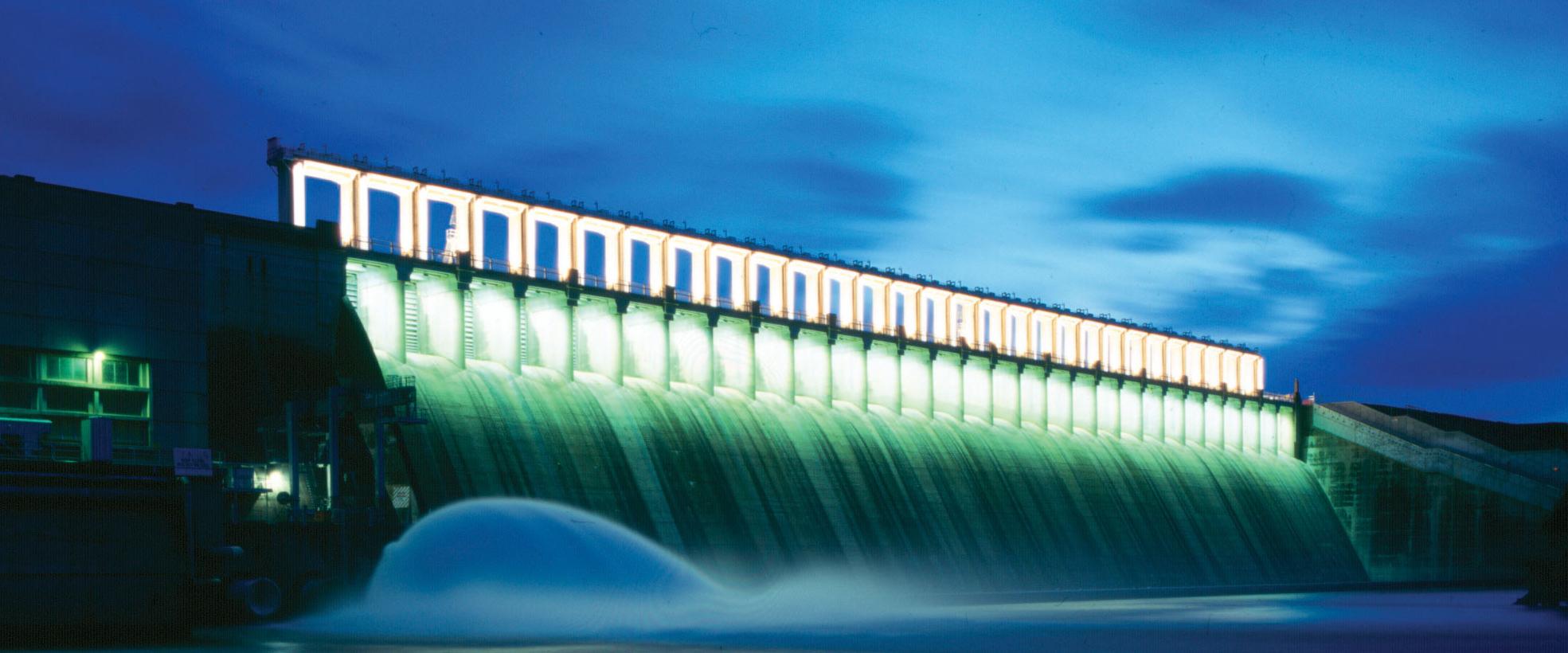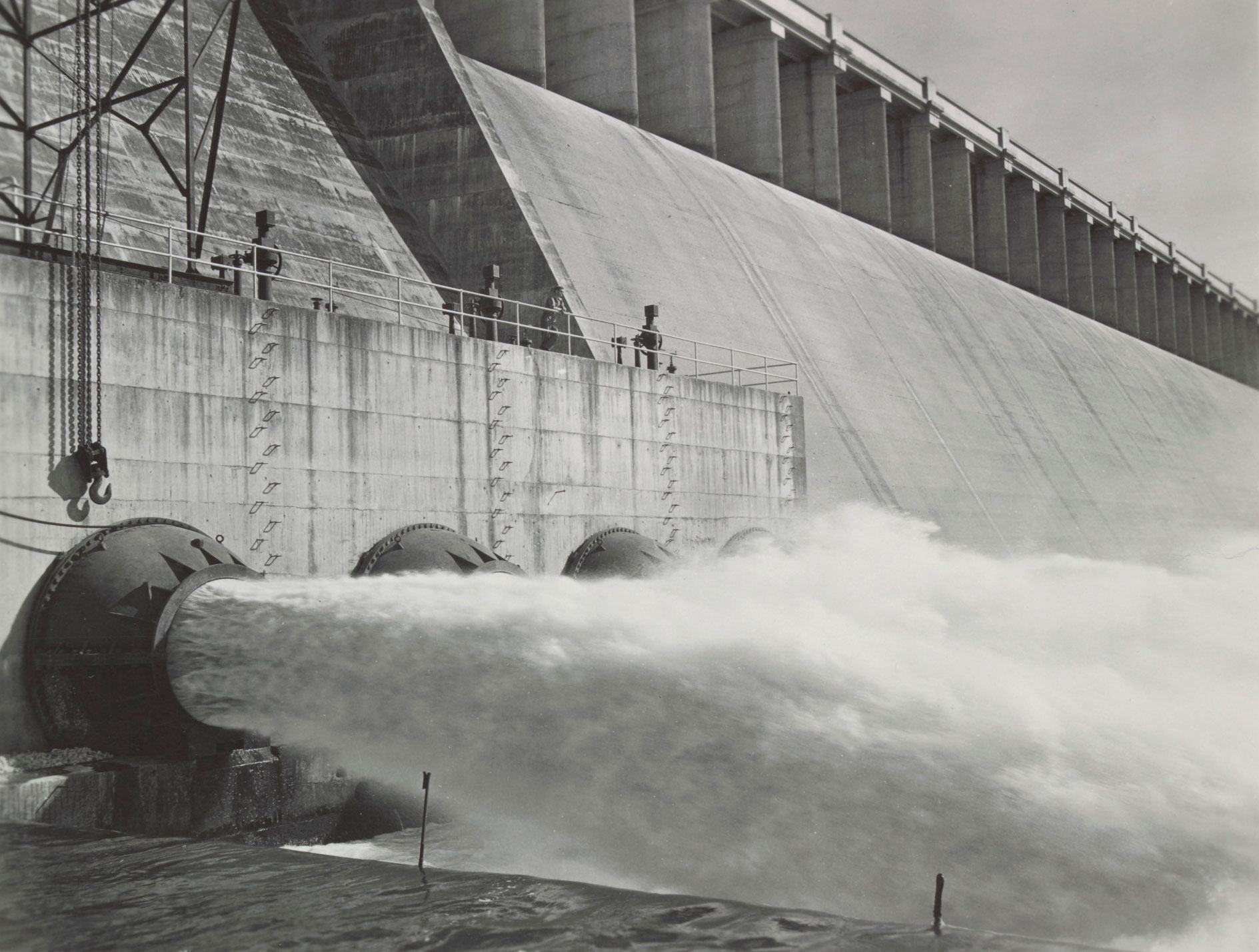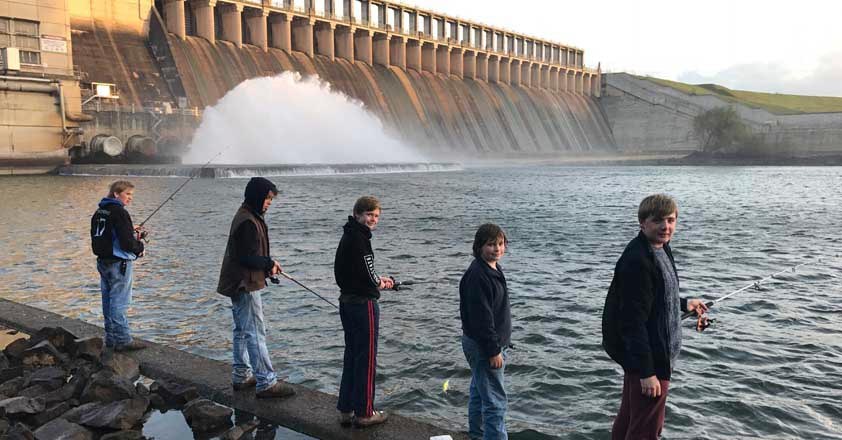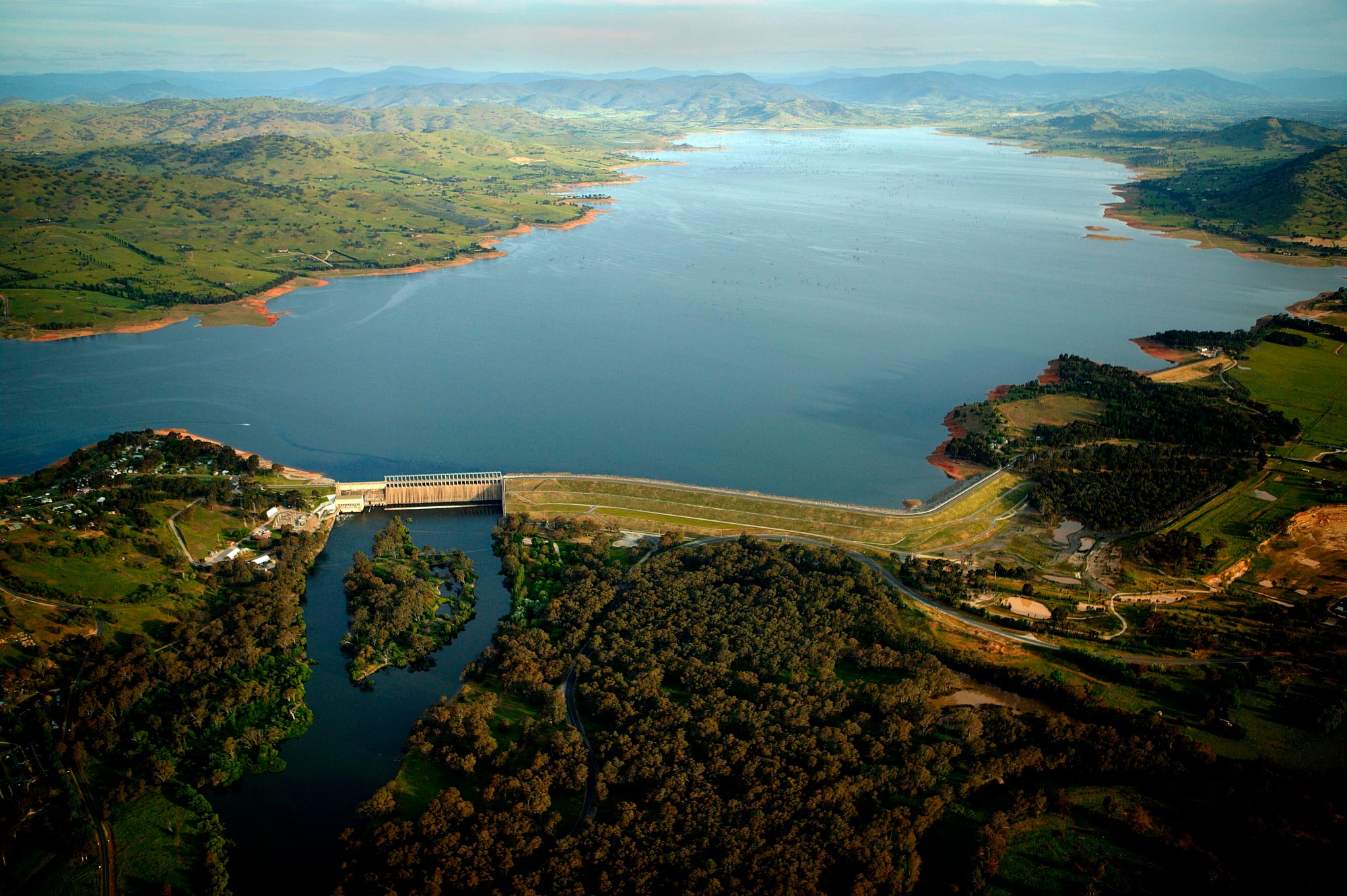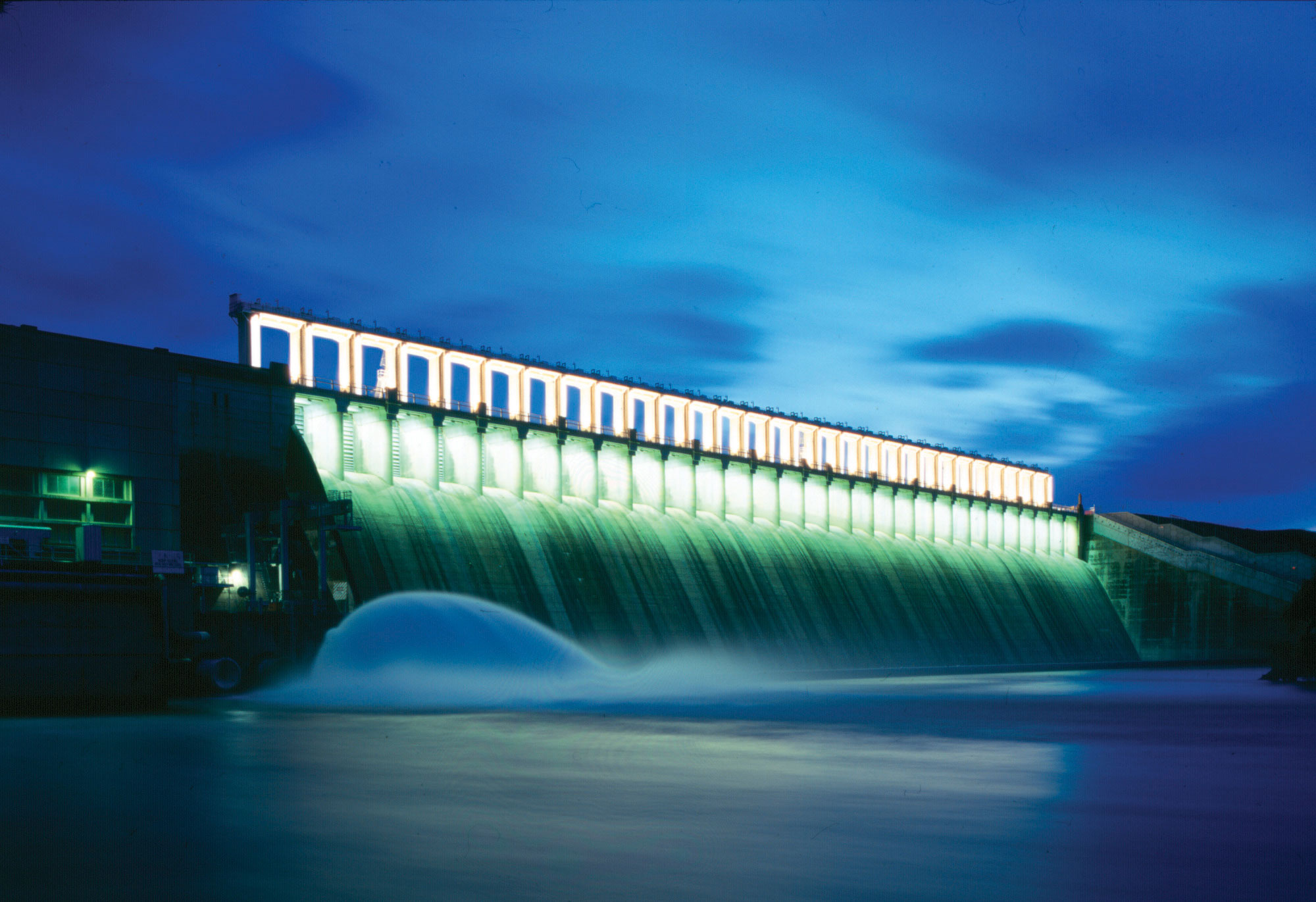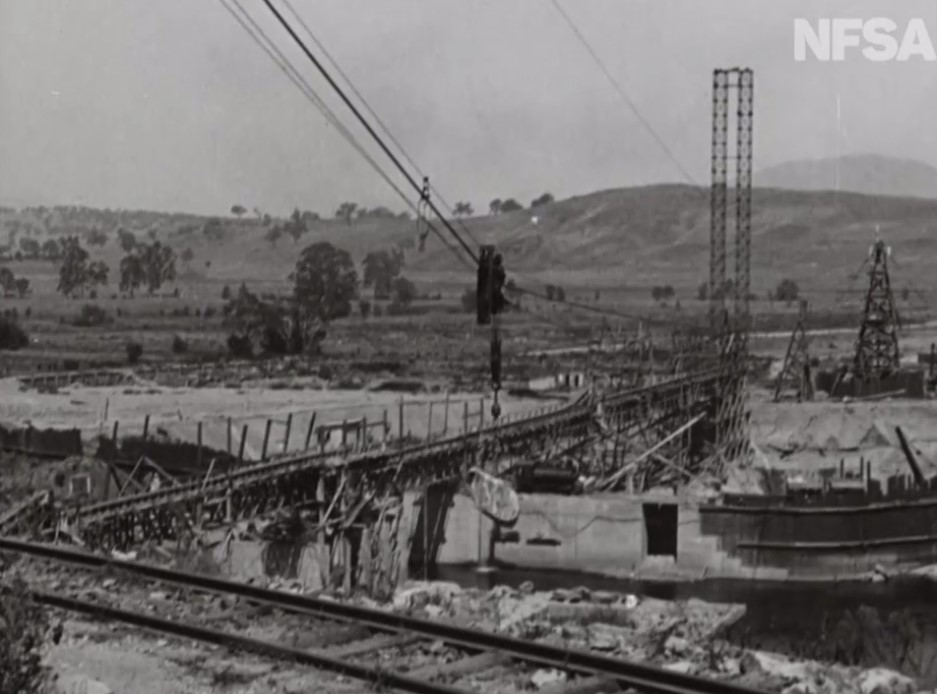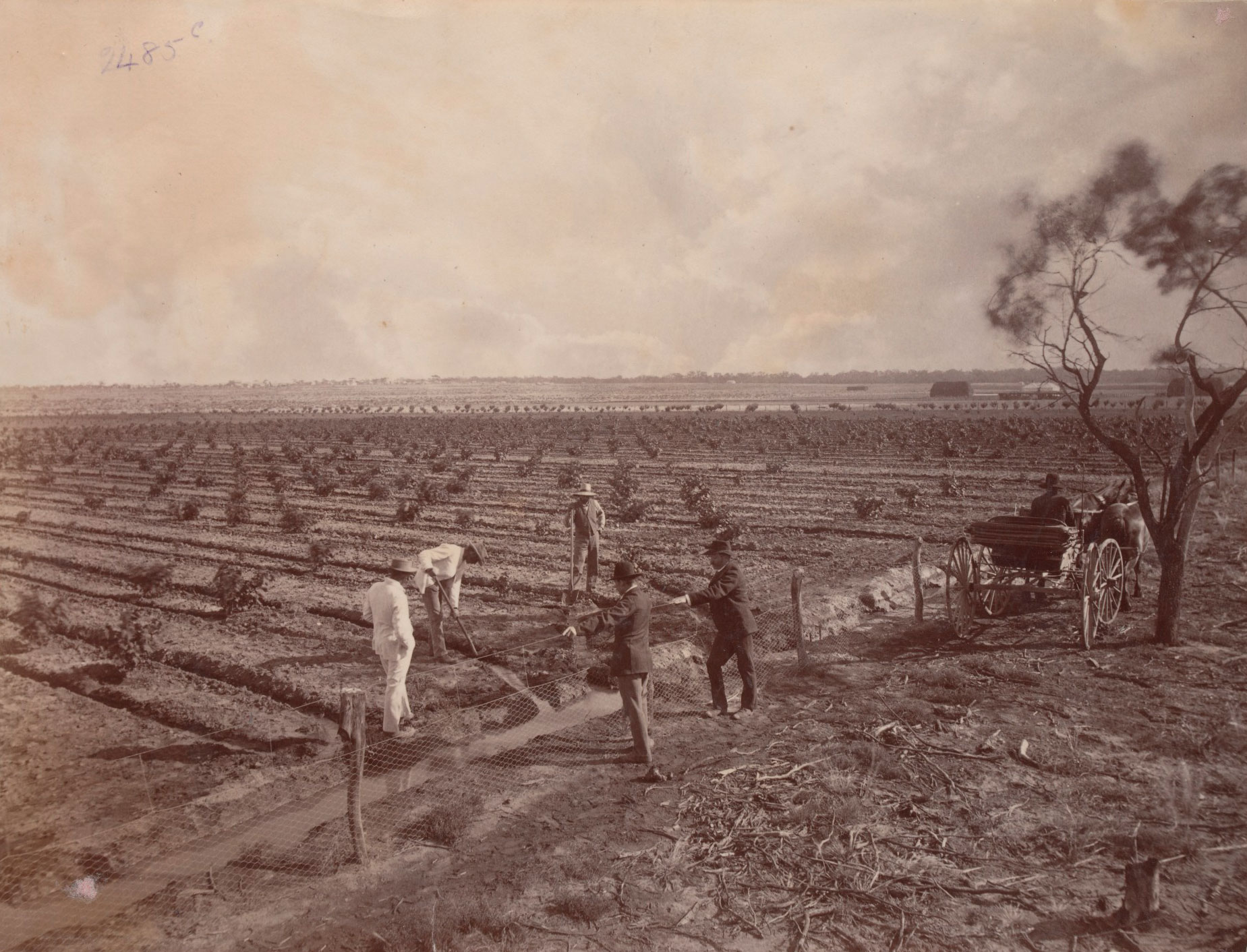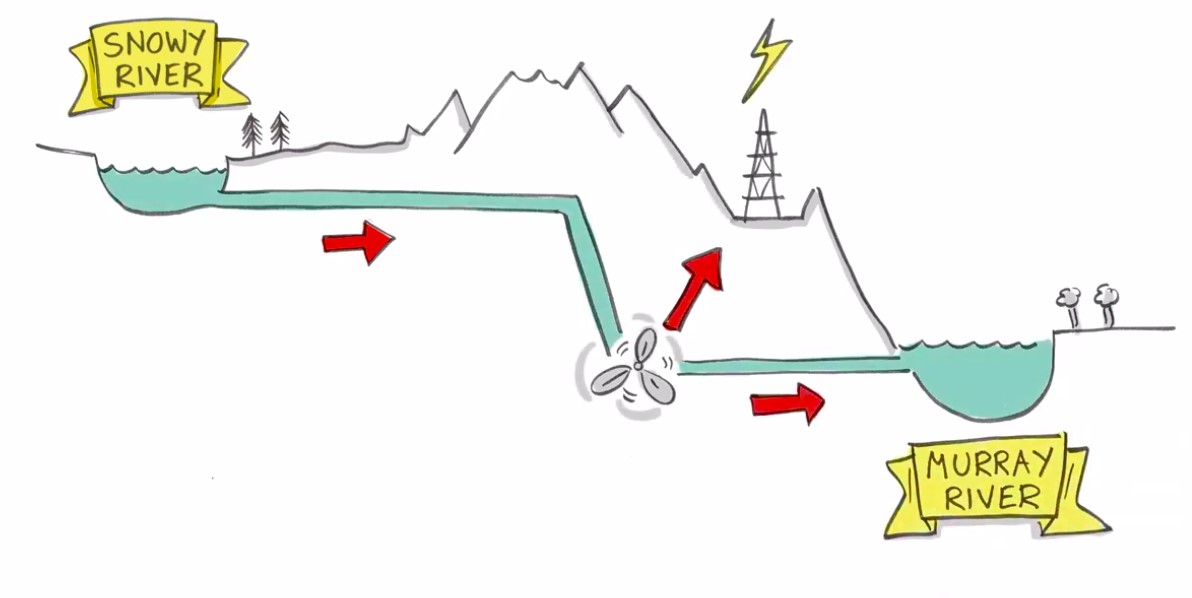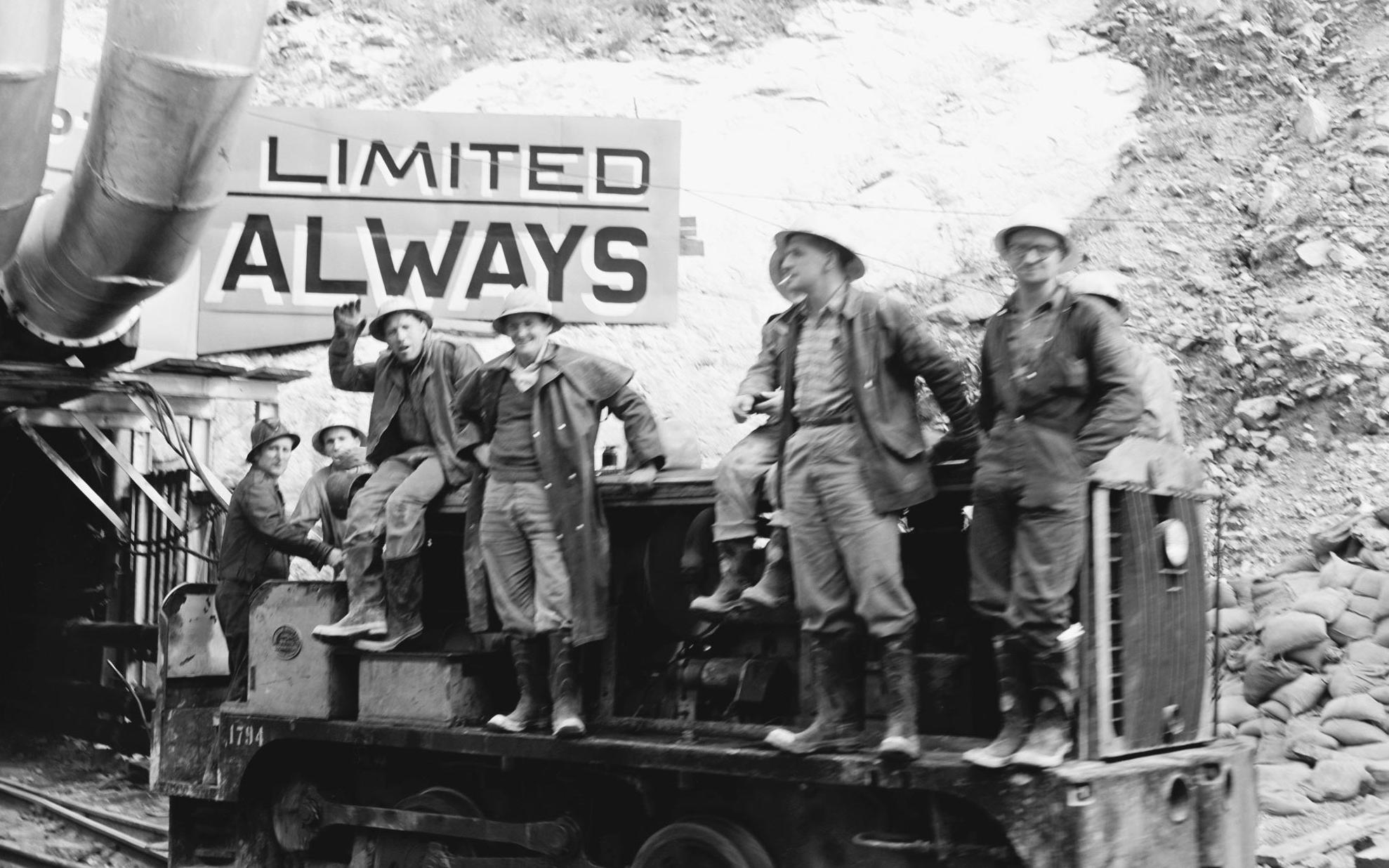‘The greatest irrigation work in the Southern Hemisphere’
1936: Opening of the Hume Dam
‘The greatest irrigation work in the Southern Hemisphere’
1936: Opening of the Hume Dam
Learning area
In a snapshot
The Hume Dam was built on the Murray River to store and control the river’s water. When it was opened on 21 November 1936 it became the largest dam in the Southern Hemisphere. It is thought of as a great feat of Australian civil engineering. Today it continues to supply millions of Australians with water and attracts tourists who come to swim, fish and enjoy watersports on the reservoir.
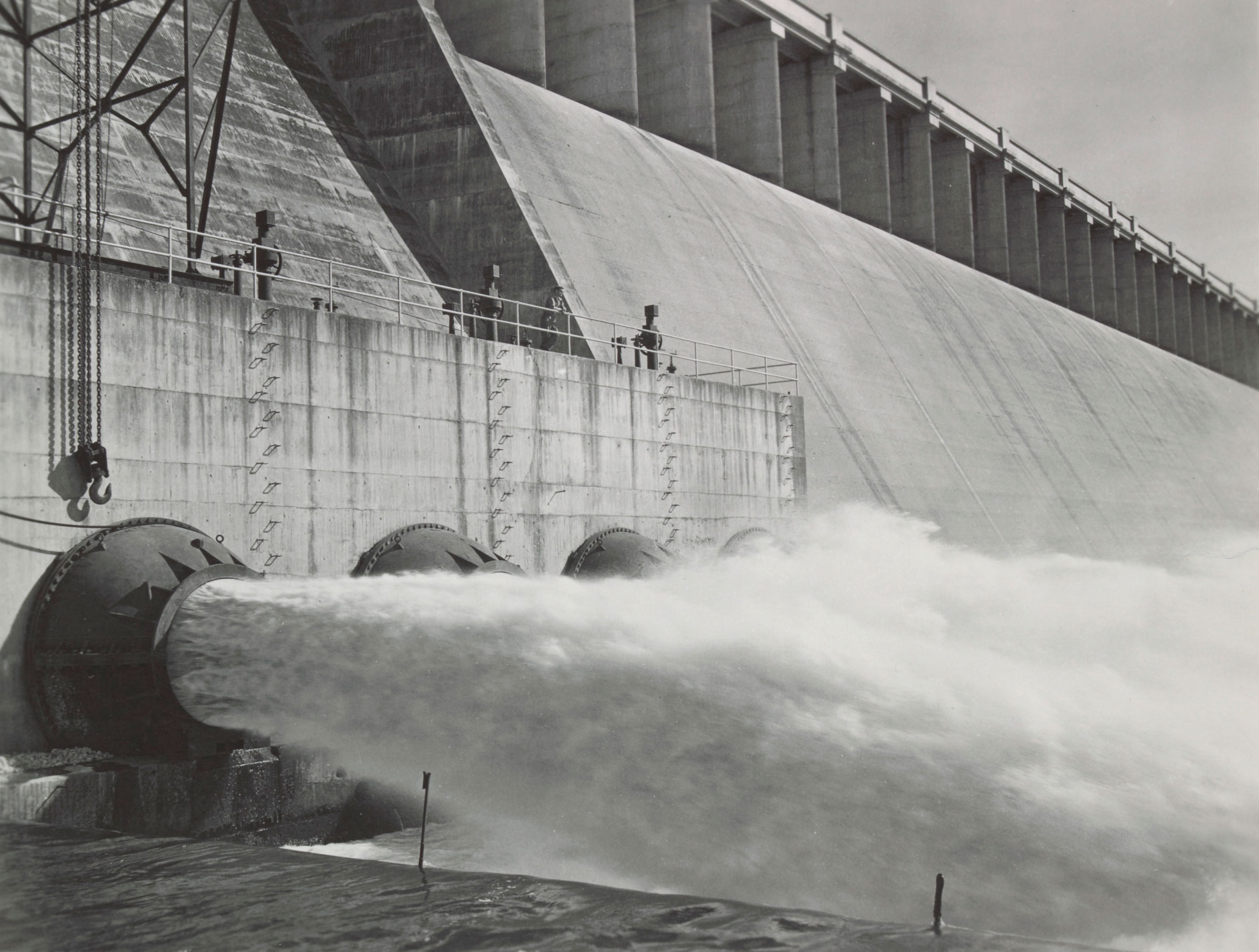
 Can you find out?
Can you find out?
1. Which three states does the Murray River flow through?
2. Why was the Hume Dam built?
3. How much water can Lake Hume hold?
Why is the Murray River so important?
The Murray River is millions of years old and existed when the Australian continent split from Gondwanaland. It was originally a warm, shallow sea but eventually formed into a river as the climate became warmer and drier. The Murray River was very important to the colonies of New South Wales, Victoria and South Australia. It was a source of water and both people and goods could be transported on boats along the river.
Today the Murray flows for 2530 kilometres and is one of the longest rivers in the world that boats can travel along. The river forms a border between the states of New South Wales and Victoria and flows into South Australia.
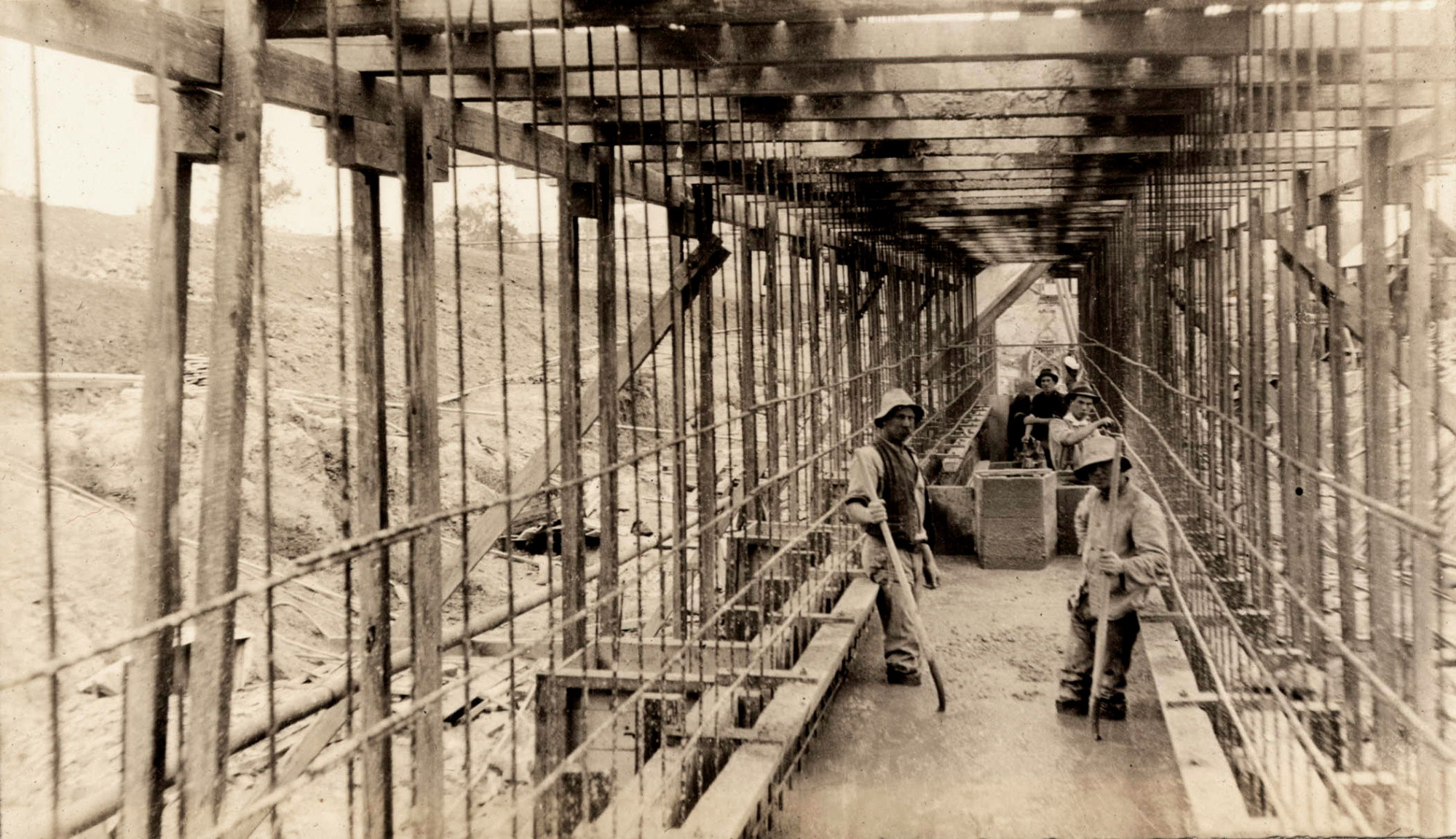
Why was a dam needed?
Australia had one of the worst droughts in its history between 1895 and 1903. This Federation Drought reminded Australians of the need to store water in the wet months of winter and spring to use in drier months, especially summer. A 1902 Royal Commission recommended that a large dam be built on the Murray River to store water and control the flow of water down the river.
The New South Wales, Victorian and South Australian governments signed the River Murray Waters Agreement in 1914. They agreed to work together to manage the Murray River and build water storage areas. In 1917 the River Murray Commission was set up to help manage the way the river water was shared between the three states and coordinate the building of the major dam and other river infrastructure.
Research task
The Hume Dam is one of three large storages along the Murray River. What are the other two?
‘The Governor-General (Lord Gowrie) on Saturday forenoon officially opened the Hume Dam, the greatest irrigation work in the Southern Hemisphere and one of the most important in the world. It cost £5,550,000 to construct.’
The Albury Banner and Wodonga Express, 27 November 1936
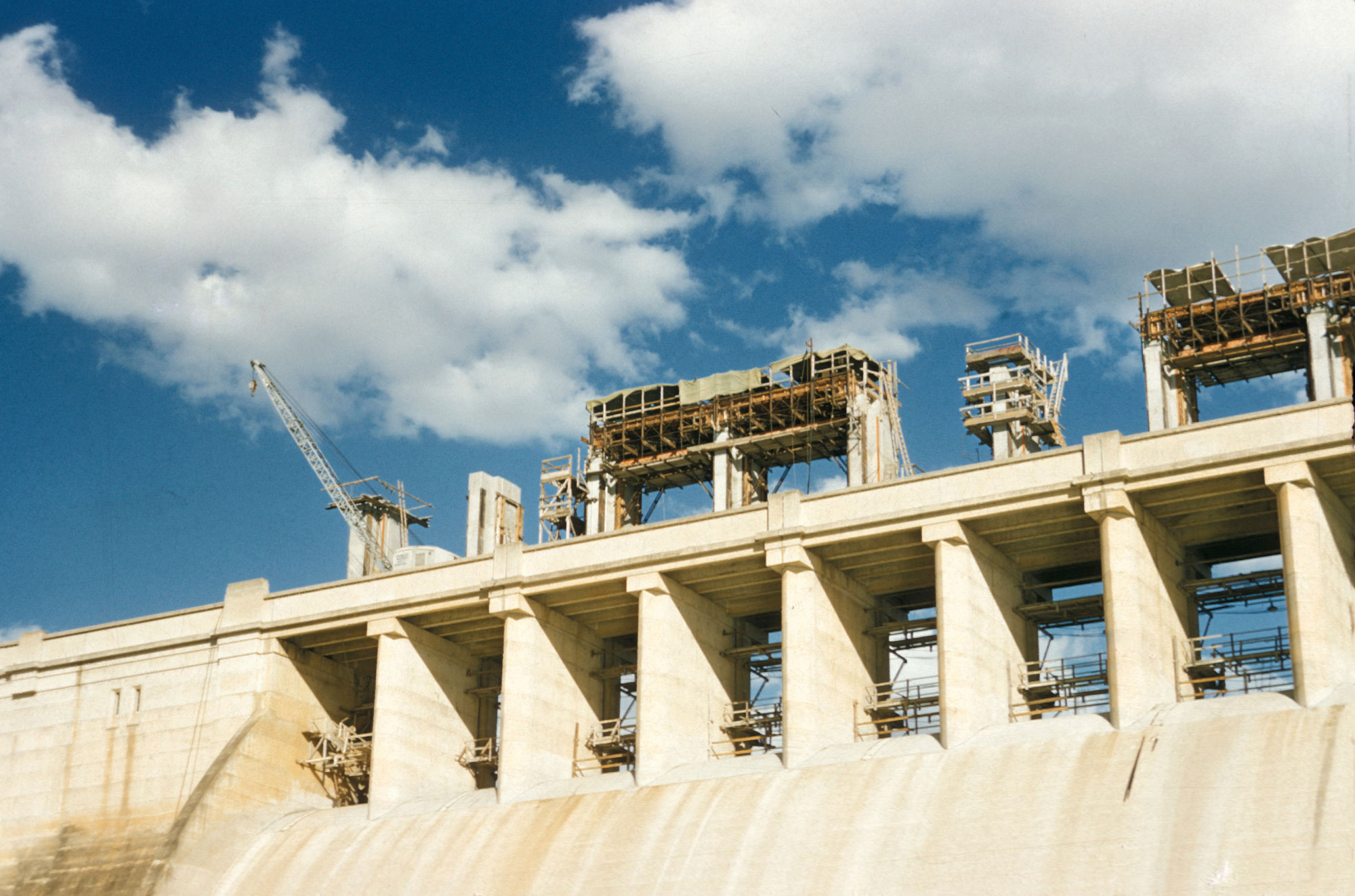
How was the dam built?
The building of the Hume Dam began in November 1919. Thousands of labourers worked on the dam. They had to do difficult and dangerous work, and some died in construction accidents.
It took 17 years to build the dam, which was officially opened by the Governor-General, Lord Gowrie, on 21 November 1936.
Since then changes were made to increase the amount of water the reservoir can hold and to improve safety standards. A power station was added to generate hydro-electricity.
Why is the Hume Dam important?
Today the reservoir known as Lake Hume can hold 3005 gigalitres of water. This water is used to irrigate farms and supply households, businesses and towns. The dam and reservoir have also become tourist attractions. Visitors use the reservoir for swimming, fishing, water skiing and boating. They can also stand on the viewing platform and experience the huge scale of the dam. The Hume Dam is thought of as one of Australia’s greatest civil engineering feats.
Read a longer version of this Defining Moment on the National Museum of Australia’s website.
Research task
The Murray River is an important place for many Aboriginal groups. Research one Murray River creation story.
 What did you learn?
What did you learn?
1. Which three states does the Murray River flow through?
2. Why was the Hume Dam built?
3. How much water can Lake Hume hold?






